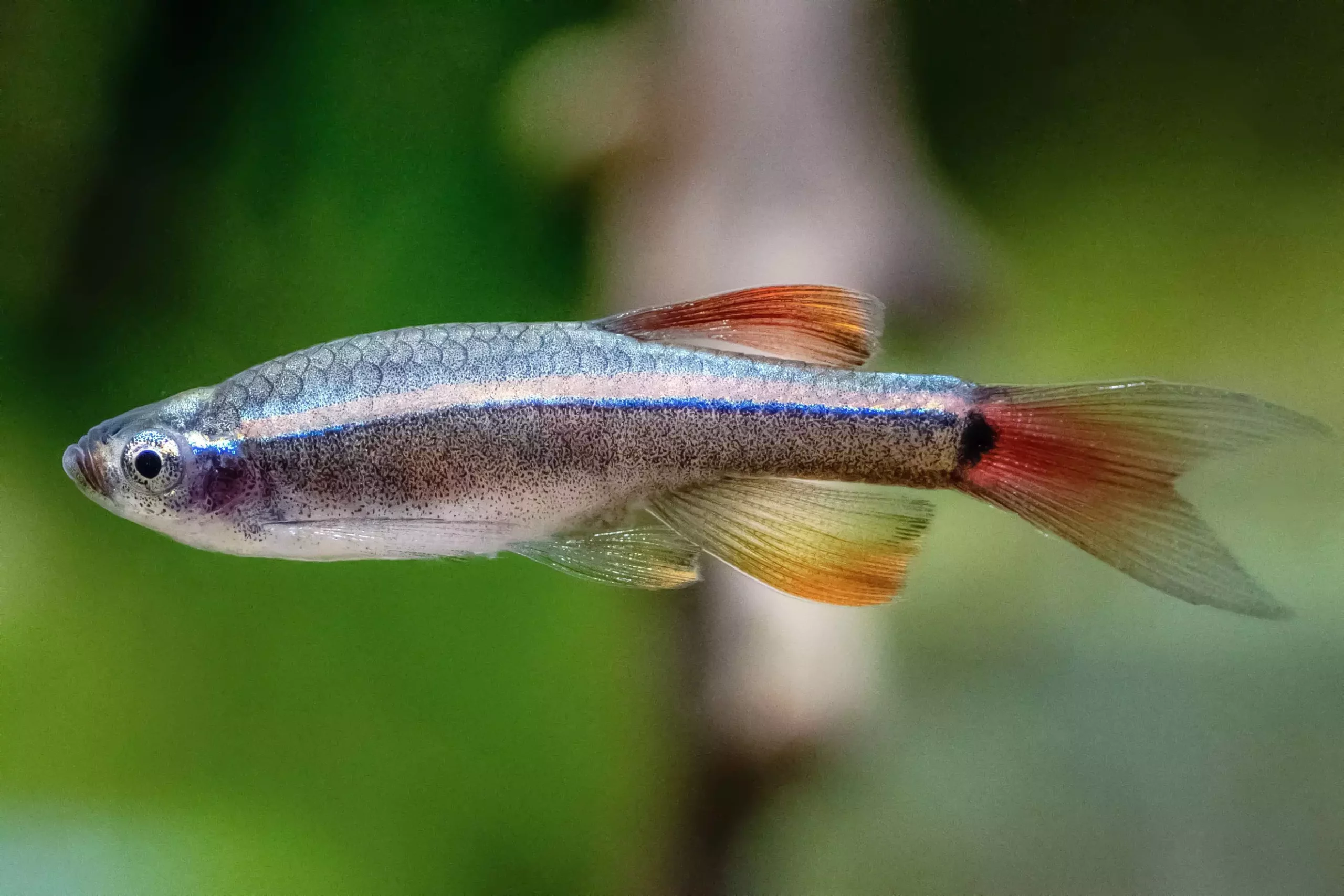The aquatic world is home to numerous fascinating species, yet few possess the vivid charm and resilience of the white cloud mountain minnow (Tanichthys albonubes). Often dubbed “the working man’s neon” for its eye-catching colors rivaling those of the neon tetra, this small fish offers an appealing option for beginner aquarists and experienced keepers alike. However, it is not just its aesthetics that make it special; the history, habitat, and care requirements of this species also deserve closer scrutiny.
Origins and Historical Significance
Originally hailing from the cool waters of China and Vietnam, the white cloud mountain minnow has a rich historical background that is as compelling as its beauty. For many years, it was the singular species in the Tanichthys genus until two new species from Vietnam were identified in 2001—Tanichthys micagemmae and Tanichthys thacbaensis.
Sadly, the original species has faced significant environmental challenges, leading to fears of its extinction in natural settings. It was presumed missing in action from its native waters since the early 1980s until isolated populations were found again in coastal provinces like Guangdong and Hainan Island in China, along with Quảng Ninh province in Vietnam. These discoveries have reminded us of the fragile status of this fish, rendering it endangered in China and highlighting the urgent need for conservation efforts.
Physical Characteristics and Behavior
The adult white cloud mountain minnow typically reaches a maximum length of about 1.5 inches (4 cm). The male minnows are particularly noteworthy for their vibrant coloration—a shimmering bronze-brown body adorned with a fluorescent line stretching from the eye to the tail, culminating in a dark spot surrounded by a striking red halo. The dorsal and anal fins feature a mix of red and white, enhancing the species’ visual appeal.
The social behavior of white cloud mountain minnows is another notable aspect. They thrive in schools and should ideally be kept in groups of at least six or more. When isolated, these minnows often exhibit a dulling of their colors and a tendency to hide. They are generally peaceful and blend well with other small, non-aggressive fish, making them an excellent choice for community tanks. However, caution should be exercised when considering larger or more aggressive species, as these can pose a threat to the tiny minnows.
Water Conditions and Habitat Setup
Creating an ideal habitat for white cloud mountain minnows involves understanding their specific environmental needs. These fish prefer cooler water temperatures ranging from 68 to 72 degrees Fahrenheit (20 to 22 degrees Celsius) and can suffer in higher temperatures, potentially reducing their lifespan. The tank substrate should be fine and dark to complement their natural colors, combined with ample vegetation, rocks, and driftwood to mimic their natural freshwater environment.
To foster a healthy living space, it is recommended to avoid extremes in water hardness and pH. Furthermore, caution should be taken to avoid any medications containing copper, as this species is particularly sensitive.
White cloud mountain minnows are versatile feeders, enjoying a varied diet that includes live, frozen, and flake foods. In the wild, they are voracious eaters of insects, with particular affinities for mosquito larvae and daphnia. When keeping these fish in an aquarium, providing a balanced diet that mimics their natural feeding patterns is essential for maintaining their vibrant colors and promoting overall health.
One of the strongest qualities of the white cloud mountain minnow is its ease of breeding, making them an excellent choice for novice aquarists interested in breeding fish. They are egg scatterers and engage in a charming courtship display during spawning. A breeding setup can be established either in a spacious community tank or a dedicated breeding tank. In either scenario, live foods play a crucial role in condition the fish prior to spawning.
The eggs, which will hatch within 36 to 48 hours if properly cared for, require minimal parental care, but separating parents from the eggs post-hatching ensures a greater survival rate of the fry.
The white cloud mountain minnow is more than just a colorful fish; it is a symbol of the importance of understanding and preserving our natural underwater ecosystems. As aquarists, we must not only appreciate the beauty these fish bring to our tanks but also the knowledge of their delicate existence in the wild. By ensuring an appropriate habitat and feeding regimen, we can not only enjoy their presence in our homes but also contribute to their continued survival through responsible breeding practices.

